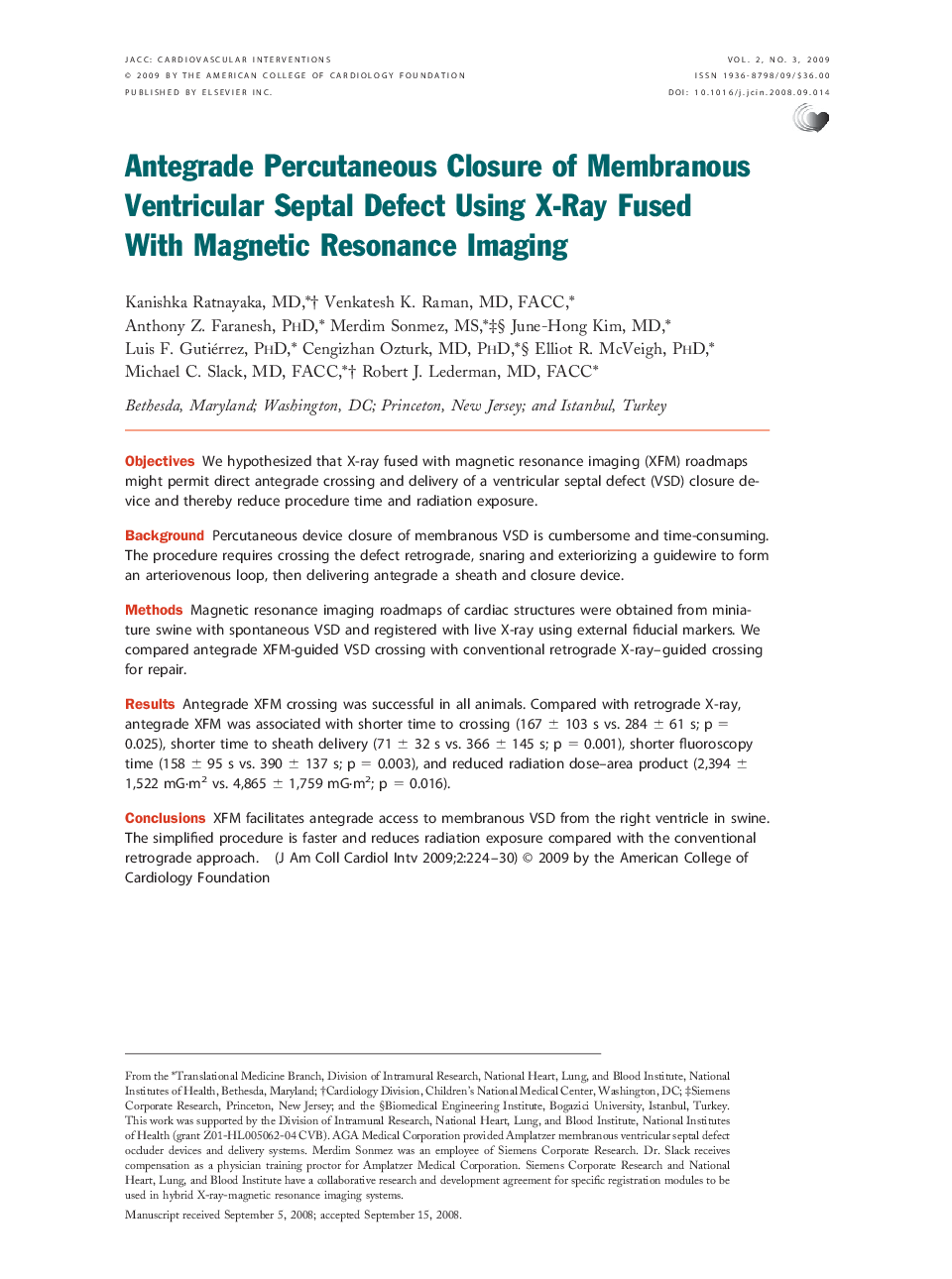| Article ID | Journal | Published Year | Pages | File Type |
|---|---|---|---|---|
| 2941679 | JACC: Cardiovascular Interventions | 2009 | 7 Pages |
ObjectivesWe hypothesized that X-ray fused with magnetic resonance imaging (XFM) roadmaps might permit direct antegrade crossing and delivery of a ventricular septal defect (VSD) closure device and thereby reduce procedure time and radiation exposure.BackgroundPercutaneous device closure of membranous VSD is cumbersome and time-consuming. The procedure requires crossing the defect retrograde, snaring and exteriorizing a guidewire to form an arteriovenous loop, then delivering antegrade a sheath and closure device.MethodsMagnetic resonance imaging roadmaps of cardiac structures were obtained from miniature swine with spontaneous VSD and registered with live X-ray using external fiducial markers. We compared antegrade XFM-guided VSD crossing with conventional retrograde X-ray–guided crossing for repair.ResultsAntegrade XFM crossing was successful in all animals. Compared with retrograde X-ray, antegrade XFM was associated with shorter time to crossing (167 ± 103 s vs. 284 ± 61 s; p = 0.025), shorter time to sheath delivery (71 ± 32 s vs. 366 ± 145 s; p = 0.001), shorter fluoroscopy time (158 ± 95 s vs. 390 ± 137 s; p = 0.003), and reduced radiation dose–area product (2,394 ± 1,522 mG·m2 vs. 4,865 ± 1,759 mG·m2; p = 0.016).ConclusionsXFM facilitates antegrade access to membranous VSD from the right ventricle in swine. The simplified procedure is faster and reduces radiation exposure compared with the conventional retrograde approach.
